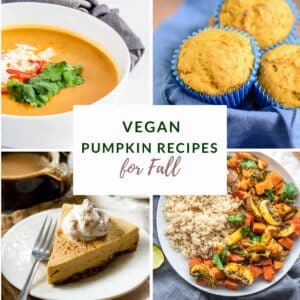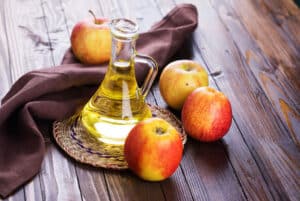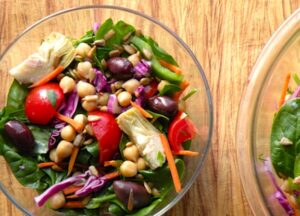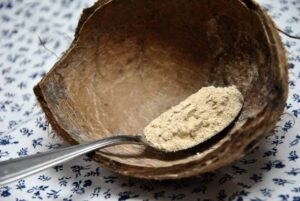When my daughter, Adair, was a tween and teen, we devoted two weeks every summer to eating only raw food: fruits, salads, crudités, and sprouts; dressings, dips, pâtés, and cheeses made from nuts and seeds; vegetable juices and creamy smoothies. When a friend asked her why we did it, she said, “Because everyone deserves to be gorgeous at least two weeks a year.” She was talking about the clear eyes, luminous skin, and well-known “glow” that come from eating fresh, raw foods.
But wait a minute: everyone deserves to be gorgeous all year long, every day and every decade. This is what happens with The Good Karma Diet — dining is upgraded with lots of color (much of it green) and fresh foods that have never seen a processing plant or a cooking pot. Impressive results show up quickly: weight loss, plenty of steady energy, a rested look so people ask if you’ve been on vacation. You’re eating foods that grew. Foods that are, for the most part, in season, so they nourish you right now. Foods with vivid colors that don’t start with “FDC#.”
The phytochemicals and overall nutrient density of greens, berries, fresh juices, and other unheated plant foods can take you light years beyond a typical, mostly cooked diet that includes lots of packaged and convenience foods, even when you’re eating vegan or close to it. (People who’ve tried that and didn’t like it can try this and see what happens.)
The color and liveliness of raw food has long appealed to me. I recall an incident, only a couple of years into being vegan. I was in my kitchen making dinner and some prep-ahead dishes for later in the week. They represented the monochromatic fare nearly everyone with an interest in natural foods was eating back then: brown rice and brown bread, lentil soup and onion soup, walnut loaf and wheat germ cutlets. My husband called and asked what I was doing. I replied, “Killing food – uh, I mean, cooking food.” With a slip deserving of Dr. Freud, I’d stated where my heart was in terms of bodily sustenance, although I didn’t know what to do with this information.
I was aware even then that there were people who ate mostly raw, but they were the ascetics of the vegetarian world. They ate fruit for breakfast and that was all. Undressed salad and nuts for lunch. More salad – lots of sprouts! – and maybe a baked potato for dinner. If they were going all out, they’d put some avocado on the potato. I don’t know about you, but when I think of the culinary good life, that isn’t it.
It would be years later, when clever raw chefs began to create actual cuisine from uncooked fruits, vegetables, nuts and seeds, that I seriously looked at “raw” as something that might be for me. I soon realized that for many people, myself included, an all-raw diet, even a delicious one, can be too restrictive. And other than for a short cleanse, the whole thing can seem bizarre, with the wheat grass and Himalayan berries and recipes that begin: “Break a young Thai coconut with your machete.” Besides, from November to May, raw is just plain cold. As a result, lots of folks dabble in it, but most of them give it up. I’m here to rescue the dabblers and suggest that you eat a veritable cornucopia of uncooked vegetables and fruits, especially in warm weather, and the very best cooked foods, too. It’s about color and comfort, about living foods and living life.
The sweet spot for wellbeing comes from finding the ideal balance of bright, brilliant foods just as they come from the orchard and garden, while allowing for cooked foods, as well, with their variety, leeway in social situations, warmth in the winter, and some comforting nutrient insurance.
Beans and whole grains are rich in certain minerals, amino acids, and B vitamins that can be tricky to get with all raw food; and a few phytonutrients – the lycopene in tomatoes, for instance -- are actually more accessible when you eat the food cooked. Grounding cooked dishes provide staying power and needed calories that fruits and vegetables don’t always have, and that you don’t want to get from an excess of high-fat foods – nuts, seeds, avocado – even though these are highly beneficial in moderation.
An appreciation of raw foods, but without taking any vows or signing any pledges, qualifies as person as a “raw enthusiast.” That’s the category into which I put myself and to which I extend you a cordial invitation. It’s easy to be enthusiastic about raw foods because eating them gives you a huge vitality boost. And once you recover from the “palate perversion” most of us developed from eating greasy foods and too-sweet sweets, the flavor burst from a perfect peach or a savory salad can be borderline orgasmic.
Excerpted from The Good Karma Diet: Eat Gently, Feel Amazing, Age in Slow Motion by Victoria Moran, with the permission of Tarcher/Penguin, a division of Penguin Random House. Copyright © 2015.






Comments
No Comments